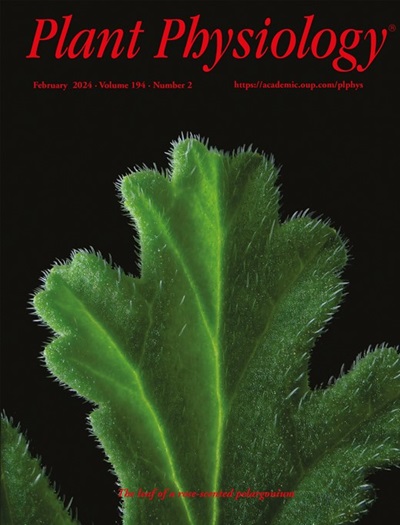Contrasting effects of warming and drought on autumn phenology of photosynthesis and growth in white spruce
IF 6.5
1区 生物学
Q1 PLANT SCIENCES
引用次数: 0
Abstract
Evergreen conifers rely on photoperiod and temperature cues to regulate autumn phenology. Climate change delays autumn cooling, whereas photoperiod remains unaffected, and this mismatch might have consequences for the timing of autumn phenology. Climatic stresses, such as drought and heat during summer, might also impact the timing of phenological events, including photosynthetic downregulation and growth cessation. We investigated the single and combined impacts of summer drought and autumn warming on photosynthetic downregulation and growth cessation in a northern and southern family of white spruce (Picea glauca). In a Temperature Free-Air Controlled Experiment (T-FACE) combined with rainout structures, we exposed white spruce seedlings to ambient temperature and rainfall, summer drought, autumn warming, or a combination of summer drought followed by autumn warming. Warming delayed the downregulation of photosynthesis in both families compared to the control seedlings, with the southern family showing increased photosynthetic activity compared to the northern family. Despite extended photosynthetic activity, secondary growth cessation was not delayed by warming and did not vary between families. Warming affected latewood xylem development, an important component of secondary growth, by increasing and decreasing lumen area in the northern family and southern family, respectively, indicating the northern family may have been more cold-limited under past selective pressures. Summer drought had minimal impacts on photosynthetic downregulation and growth cessation in either family. We conclude that warming-induced extension of photosynthetic activity in autumn may not translate into increased growth and carbon sequestration due to strong photoperiodic and genetic constraints on growth cessation in white spruce.增温与干旱对白云杉秋季光合物候及生长的影响比较
常绿针叶树依靠光周期和温度线索来调节秋季物候。气候变化延缓了秋季降温,而光周期不受影响,这种不匹配可能对秋季物候的时间产生影响。气候压力,如夏季的干旱和炎热,也可能影响物候事件的时间,包括光合作用的下调和生长停止。研究了夏季干旱和秋季变暖对南方和北方云杉(Picea glauca)光合作用下调和生长停止的单一和联合影响。在温度自由空气控制实验(T-FACE)中,我们将白云杉幼苗暴露于环境温度和降雨、夏季干旱、秋季变暖或夏季干旱后秋季变暖的组合中。与对照幼苗相比,升温延缓了两科光合作用的下调,南方科的光合活性比北方科的高。尽管光合作用活动延长,但次生生长停止并不因变暖而延迟,并且在不同的家庭之间没有差异。暖化对晚木次生生长的重要组成部分木质部发育的影响,北方科和南方科的管腔面积分别增加和减少,表明北方科在过去的选择压力下可能受到更多的冷限制。夏季干旱对光合作用下调和生长停止的影响最小。我们得出结论,由于白云杉生长停止受到强烈的光周期和遗传限制,因此变暖导致的秋季光合活性延长可能不会转化为生长和碳固存的增加。
本文章由计算机程序翻译,如有差异,请以英文原文为准。
求助全文
约1分钟内获得全文
求助全文
来源期刊

Plant Physiology
生物-植物科学
CiteScore
12.20
自引率
5.40%
发文量
535
审稿时长
2.3 months
期刊介绍:
Plant Physiology® is a distinguished and highly respected journal with a rich history dating back to its establishment in 1926. It stands as a leading international publication in the field of plant biology, covering a comprehensive range of topics from the molecular and structural aspects of plant life to systems biology and ecophysiology. Recognized as the most highly cited journal in plant sciences, Plant Physiology® is a testament to its commitment to excellence and the dissemination of groundbreaking research.
As the official publication of the American Society of Plant Biologists, Plant Physiology® upholds rigorous peer-review standards, ensuring that the scientific community receives the highest quality research. The journal releases 12 issues annually, providing a steady stream of new findings and insights to its readership.
 求助内容:
求助内容: 应助结果提醒方式:
应助结果提醒方式:


